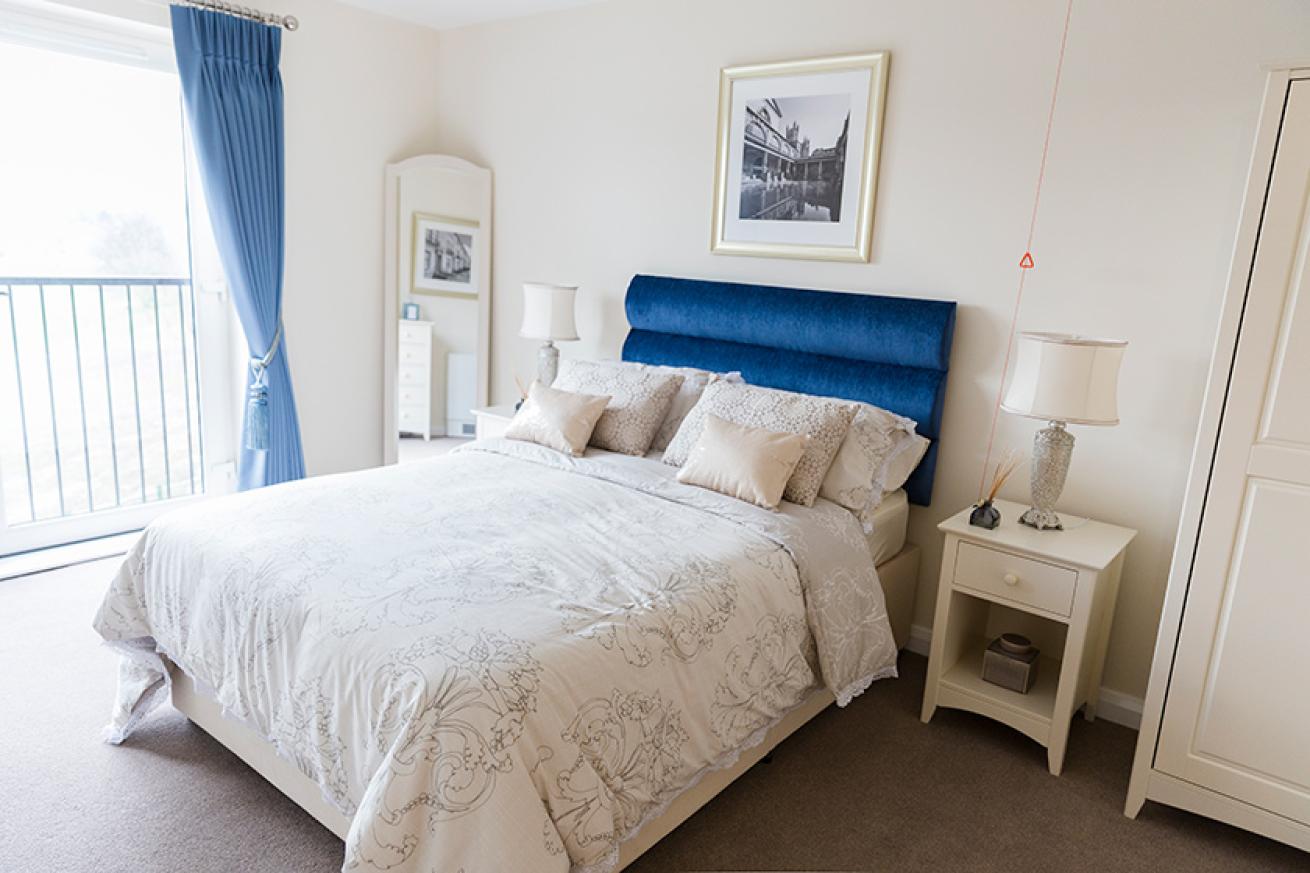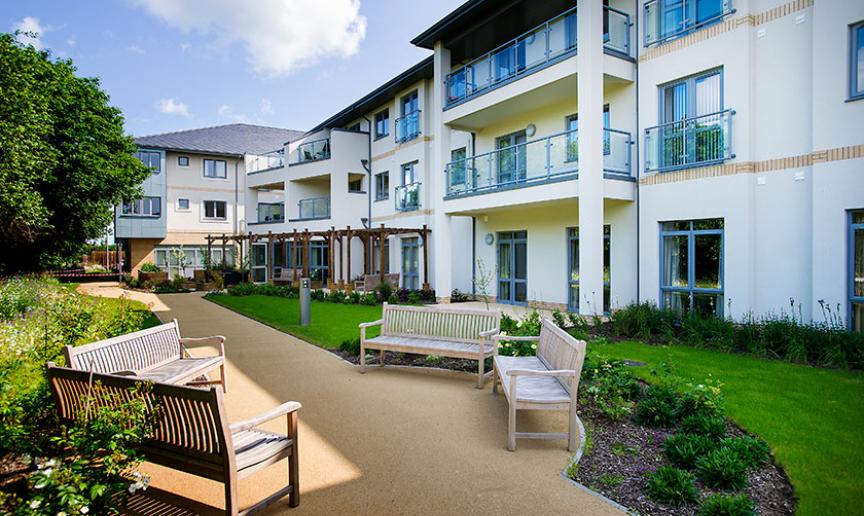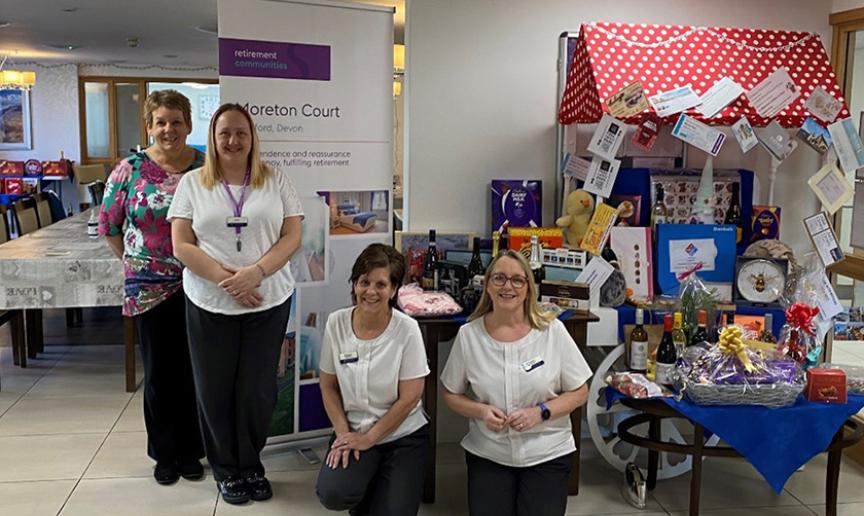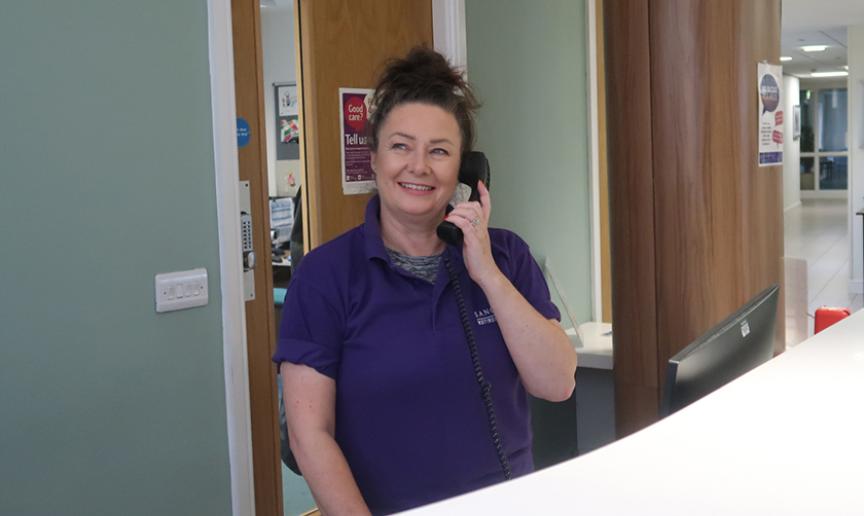Our retirement properties are all unique, but no matter which one you call home, you’ll notice a lively and welcoming atmosphere with a friendly community of people.
Our retirement communities offer a form of independent living, and what remains the same throughout our services is the high-quality buildings, facilities and on-site care and support services.
This page explains the different types of apartments available within our retirement communities, including rented apartments, leasehold apartments, and apartments available through the Government’s OPSO scheme. There is also a handy table which explains some of the differences between our retirement communities and the other types of later-life accommodation.
If you have any further queries, see our retirement community FAQs, or get in touch.

Retirement property options
How is a retirement community different from sheltered housing or a care home?
We know that the options for retirement housing can sometimes seem overwhelming. Our retirement communities are a type of housing which is sometimes called “extra care” or “assisted living” accommodation. Extra care housing enables older people (or people with long-term care needs) to live independently in their own apartment, with the reassurance that care and support staff are on-site 24-hours a day.
You may also have read about sheltered housing, also known as housing for older people, as well as residential care homes and residential nursing homes. This table helps to explain some of the differences between them:
Types |
Sheltered housing/Housing for older people |
Retirement communities/Extra care |
Residential care home/Residential nursing home |
|---|---|---|---|
Tenancy type |
You may rent as a tenant, and there are a variety of different tenancy types available. Alternatively, you may part-own as a leaseholder. | You may rent as a tenant, with an assured tenancy, which means that it is your home and staff access is restricted. Alternatively, you may part-own or fully own as a leaseholder. | You are a licensee, not a tenant or a leaseholder. Staff have unrestricted access to your room as appropriate. |
Accommodation type |
You have your own self-contained apartment. | You have your own self-contained one or two-bedroom apartment. | You have your own bedroom, which may have an en-suite toilet or bathroom. |
Staff onsite |
There is a scheme manager, or warden, who is responsible for the management of the building, but they may not be based on-site. | Staff are based on-site, and someone is on-call 24-hours a day. Many communities have a manned reception on weekdays. | Staff are on-site 24-hours a day, to provide personal or nursing care. Many homes have a manned reception on weekdays. |
Care and support |
You do not have to require care or support, but there is no care team on-site, so any care, support or domestic services must be managed by your choice of external agency. | Some communities require you to need care and support, but others are open to people who are just planning ahead. There is a 24-hour care and support team onsite. Staff cannot provide a high level of nursing care. | You must need regular personal care or nursing to be eligible. There is a 24-hour care team on-site, who provide residential care, nursing care, specialist dementia care and respite care. |
Communal facilities |
There are usually limited communal facilities and a communal garden. | Each community has its own range of communal facilities, usually including a restaurant, hairdressing salon, library room or games room, and garden. | Communal facilities usually include a lounge, dining room and garden. |
Accessibility |
There may be some level access at some schemes but others may have stepped access. | There is level access throughout the building and gardens, and lifts to all floors. | There is level access throughout the building and gardens and lifts to all floors. |
Peace of mind |
There is a 24-hour telecare service, should you require support. | There is a pull cord system in every apartment, and a pendant or wrist alarm available if required, which connects directly to the on-site care and support team. | Pendant or wrist alarms are available if required, which connects directly to the on-site care team. |
Eligibility |
You do not usually need to have a care or support need to be eligible, but you must meet any age and location eligibility criteria (often 55 or over). | You may not need to have a care or support need to be eligible, but you must meet any age and location eligibility criteria. You may also need to be referred by the local authority. | Eligibility varies and usually depends on your personal circumstances, such as your care needs, whether own your own home and whether you are being funded by the local authority or self-funding. |
Find out more |
Sanctuary provides Housing for Older People services. | Find a retirement community near you. | View Sanctuary Care’s residential care and nursing homes. |
Please note that the above information is for guidance only.
Choosing to move to a retirement community is a big decision. We also encourage you to discuss your housing options with your family and friends, and to seek independent advice, support and representation as appropriate. Organisations such as your local authority, Age UK, Citizens Advice, or the Elderly Accommodation Counsel (EAC) can help.

Find a service
See more about our services in your local area, including eligibility criteria and how to apply.
Find a service
Latest news
Read our latest news and customer stories from across our retirement communities.
Latest news
Contact us
Get in touch to discuss how we can partner with your organisation and make great things happen.
Contact us